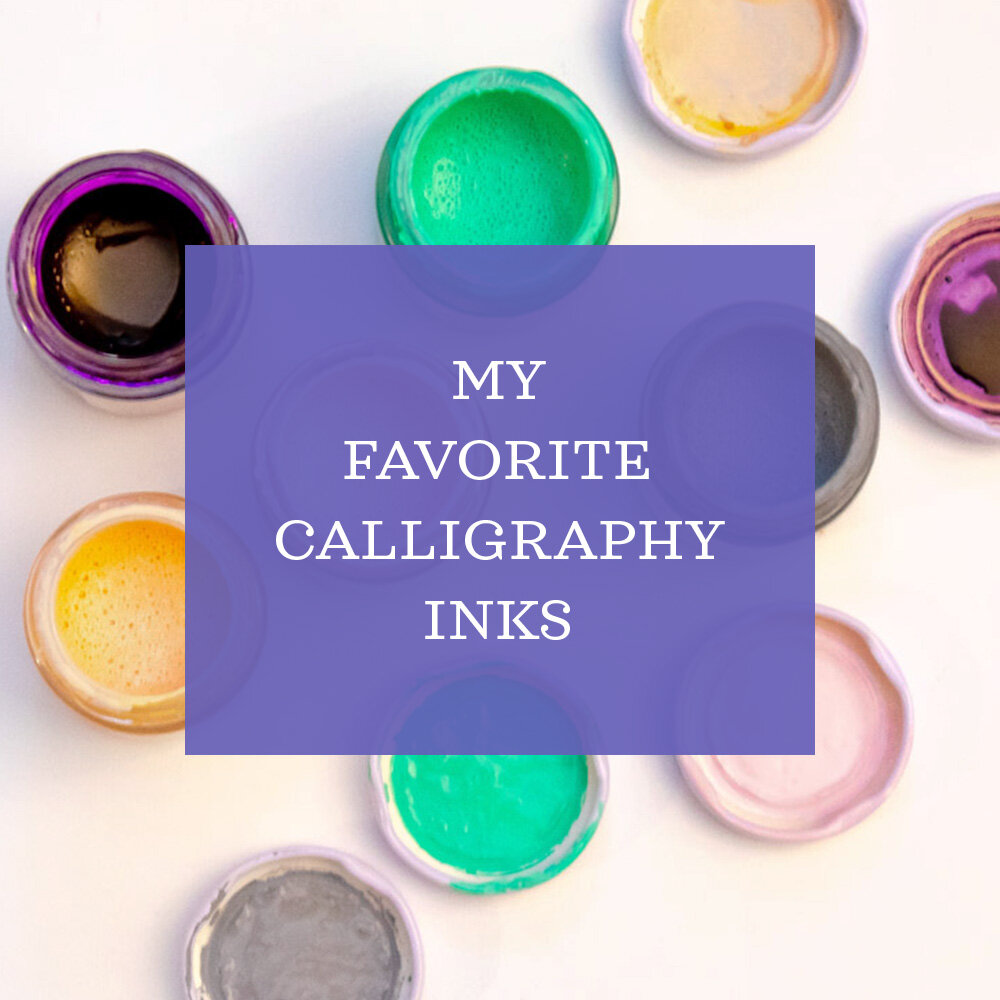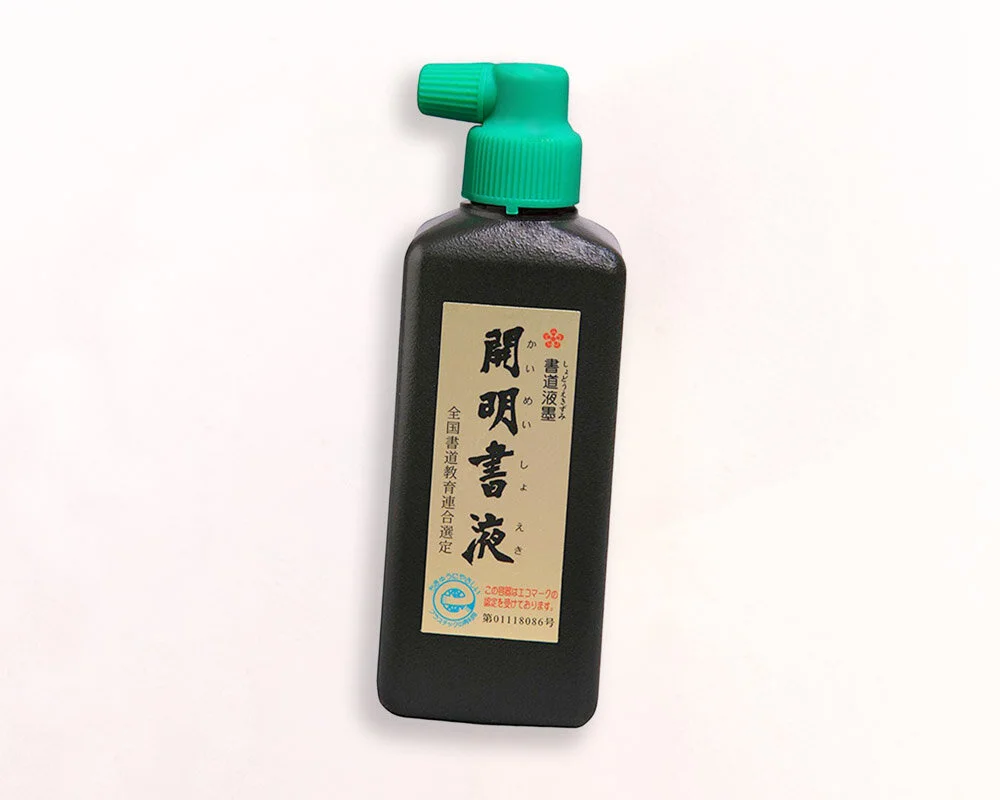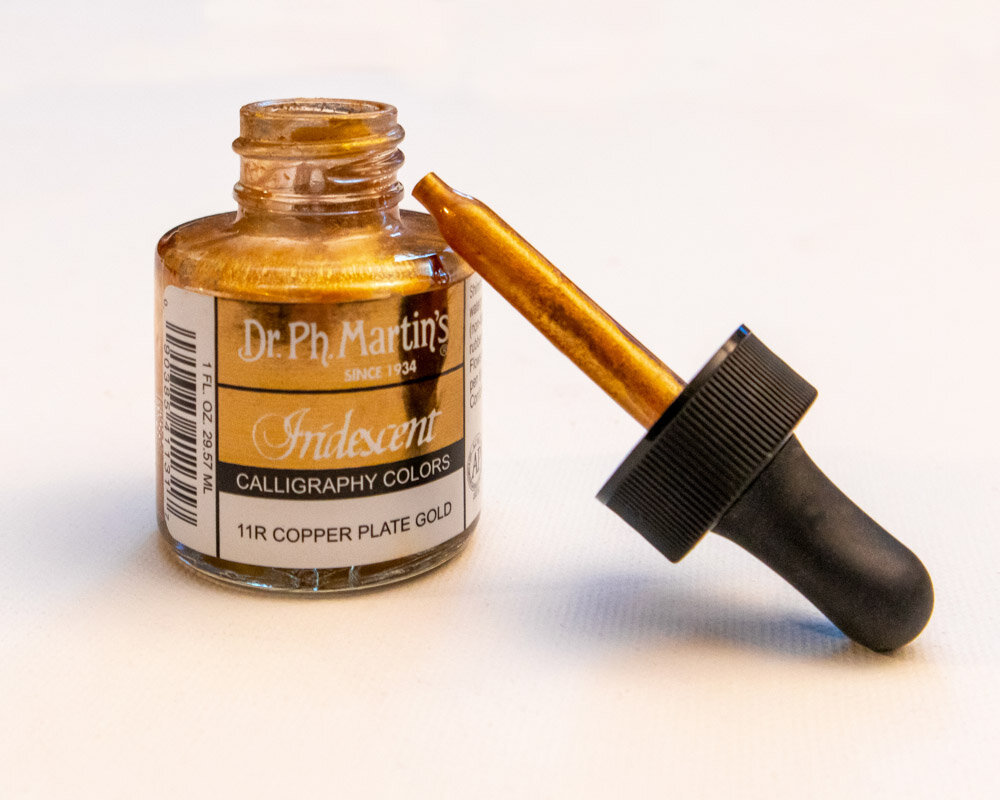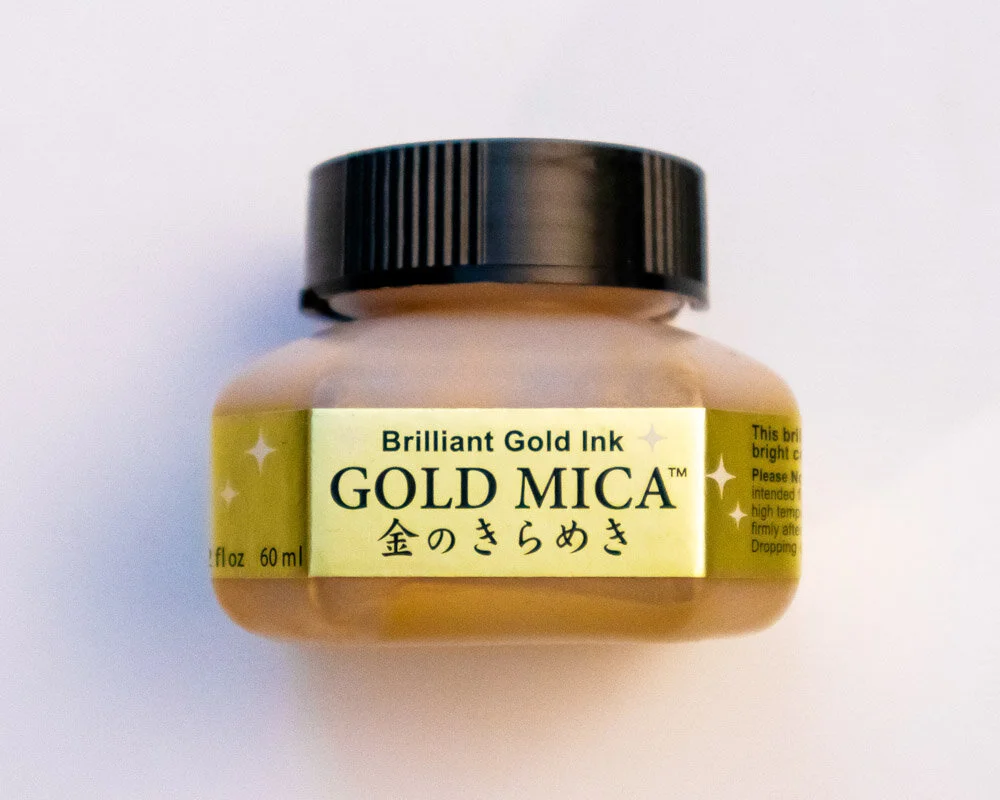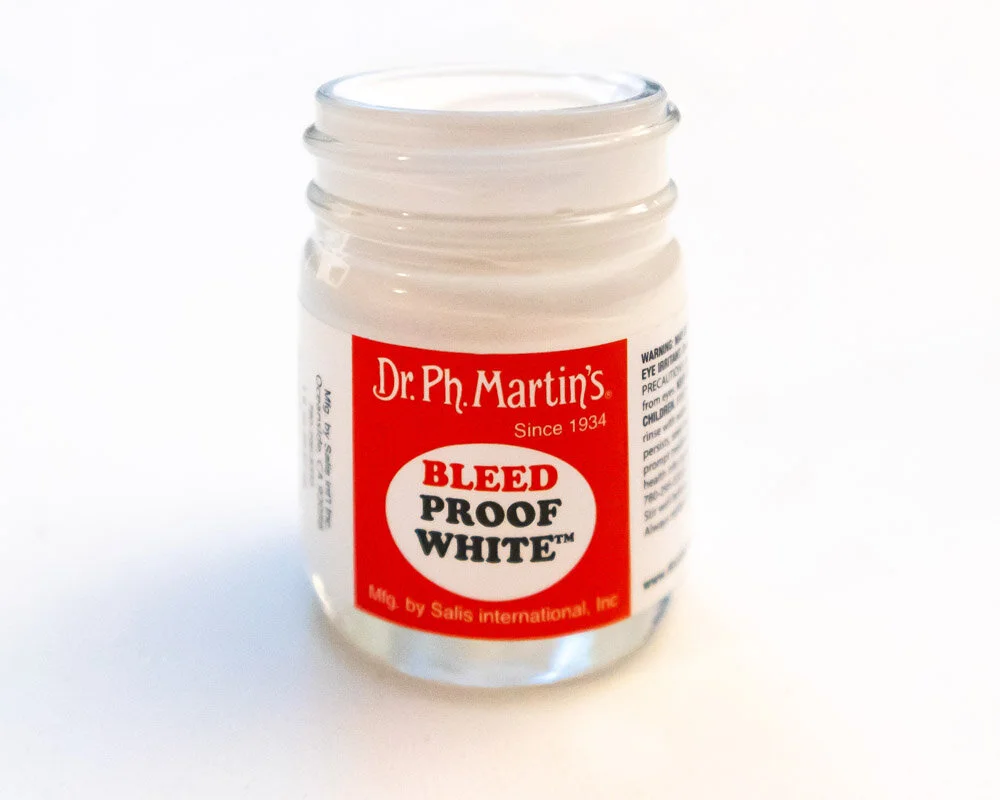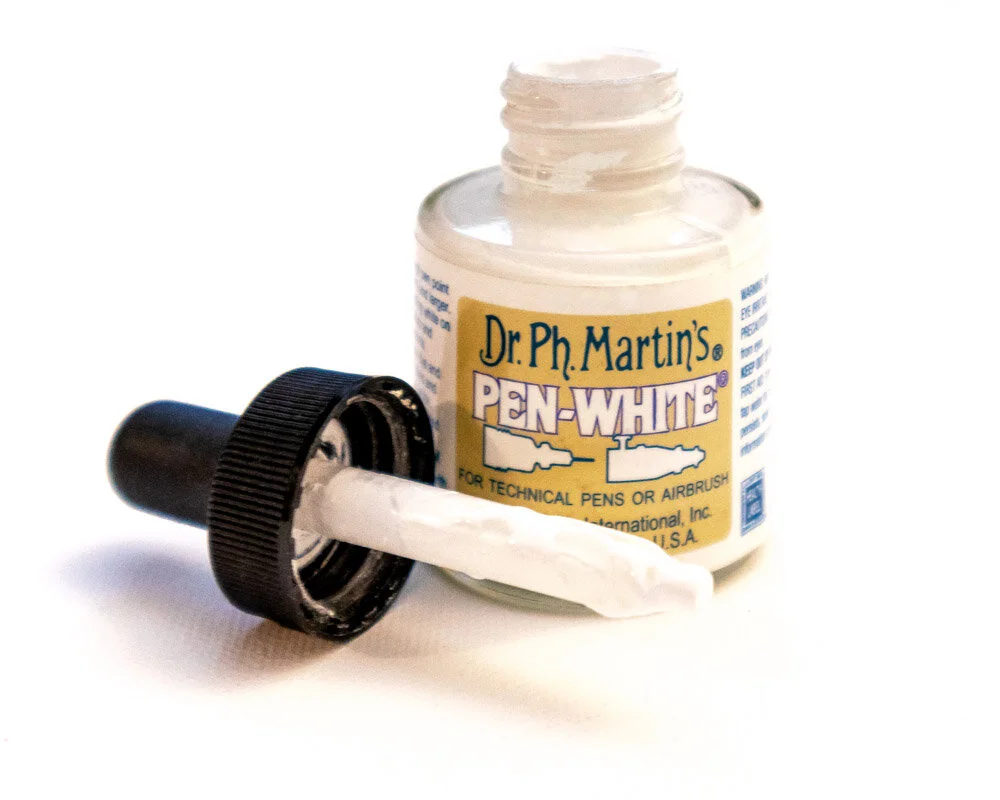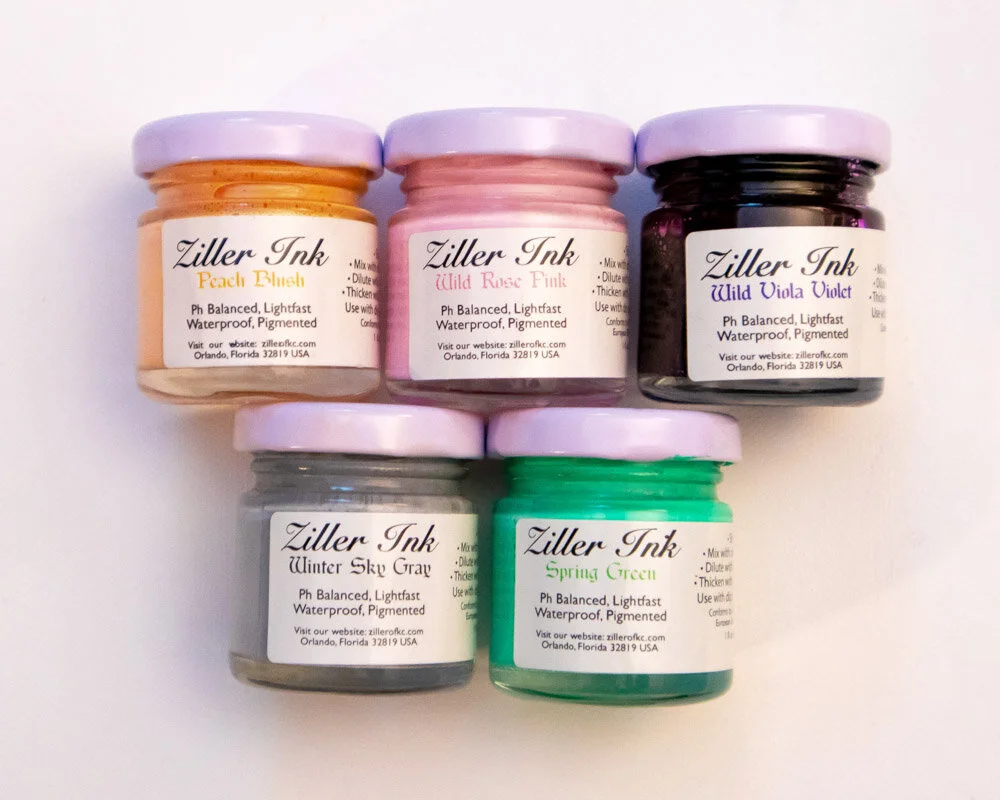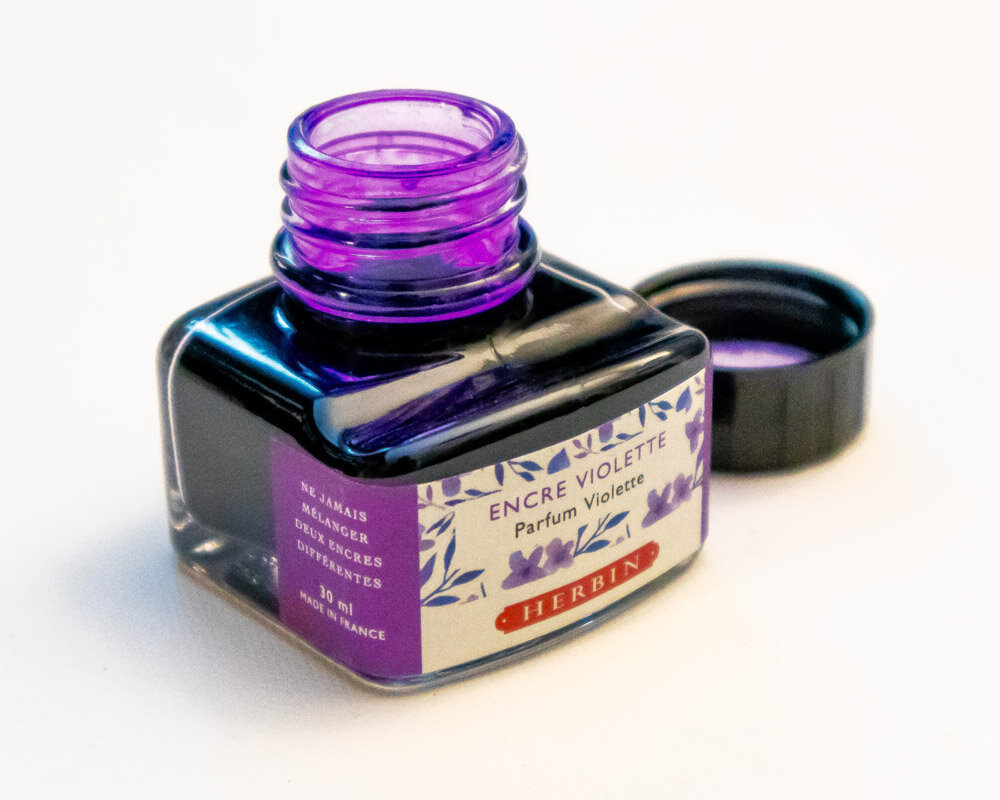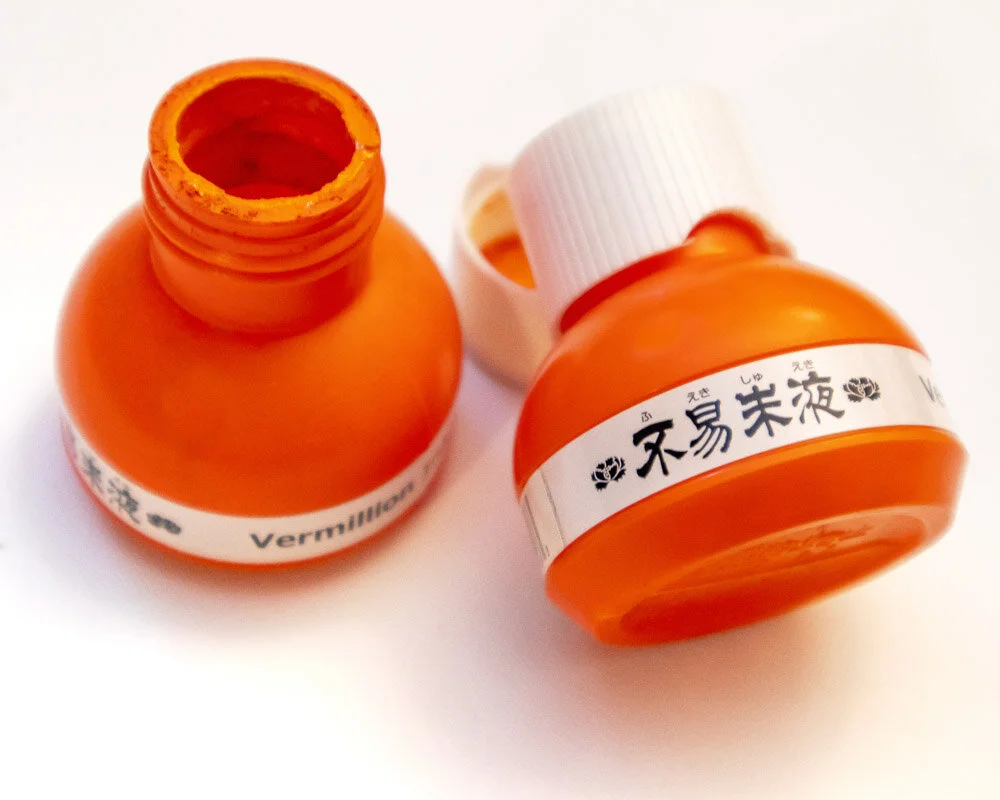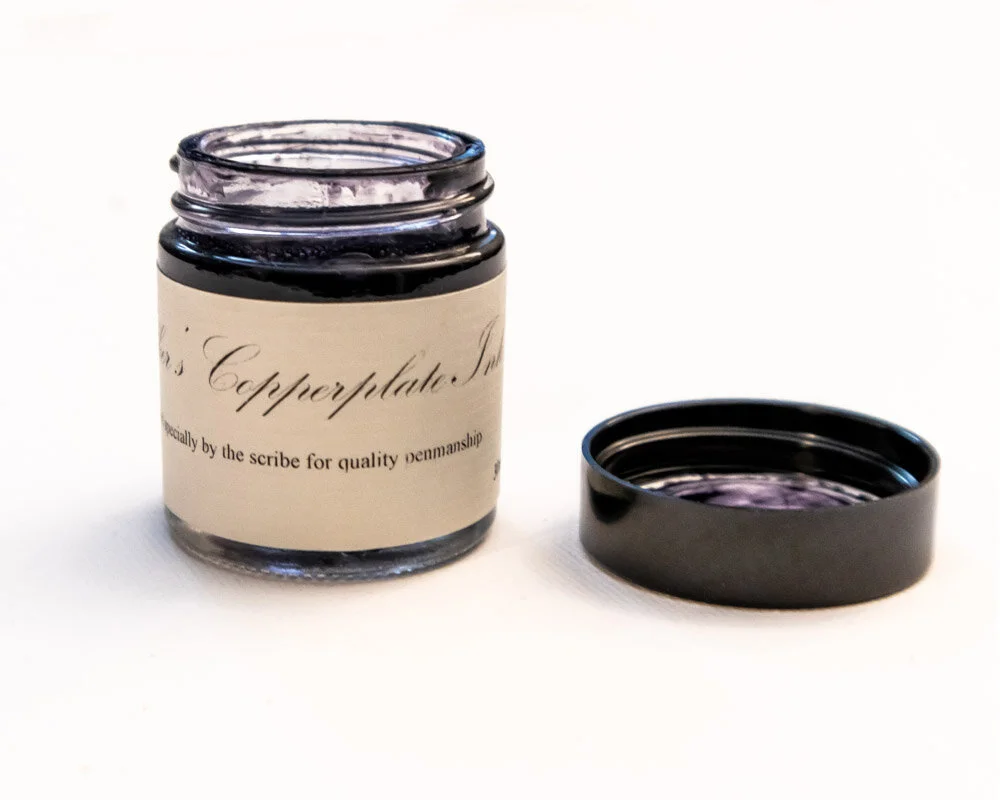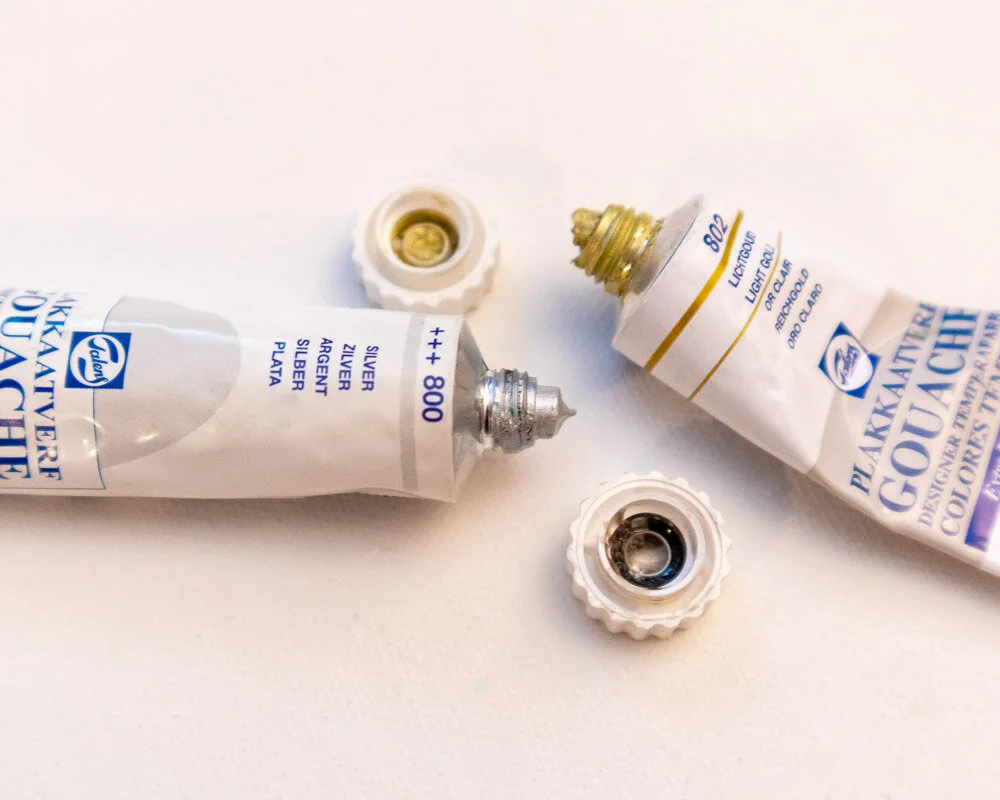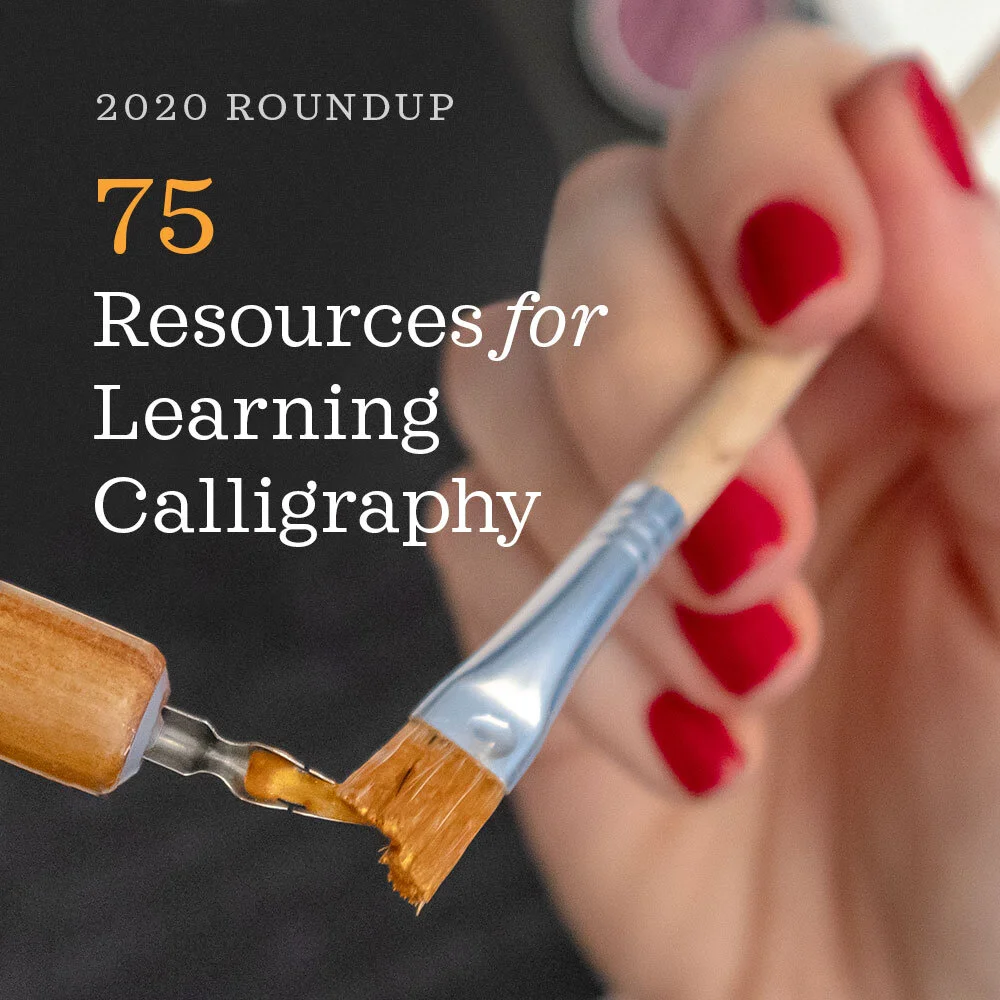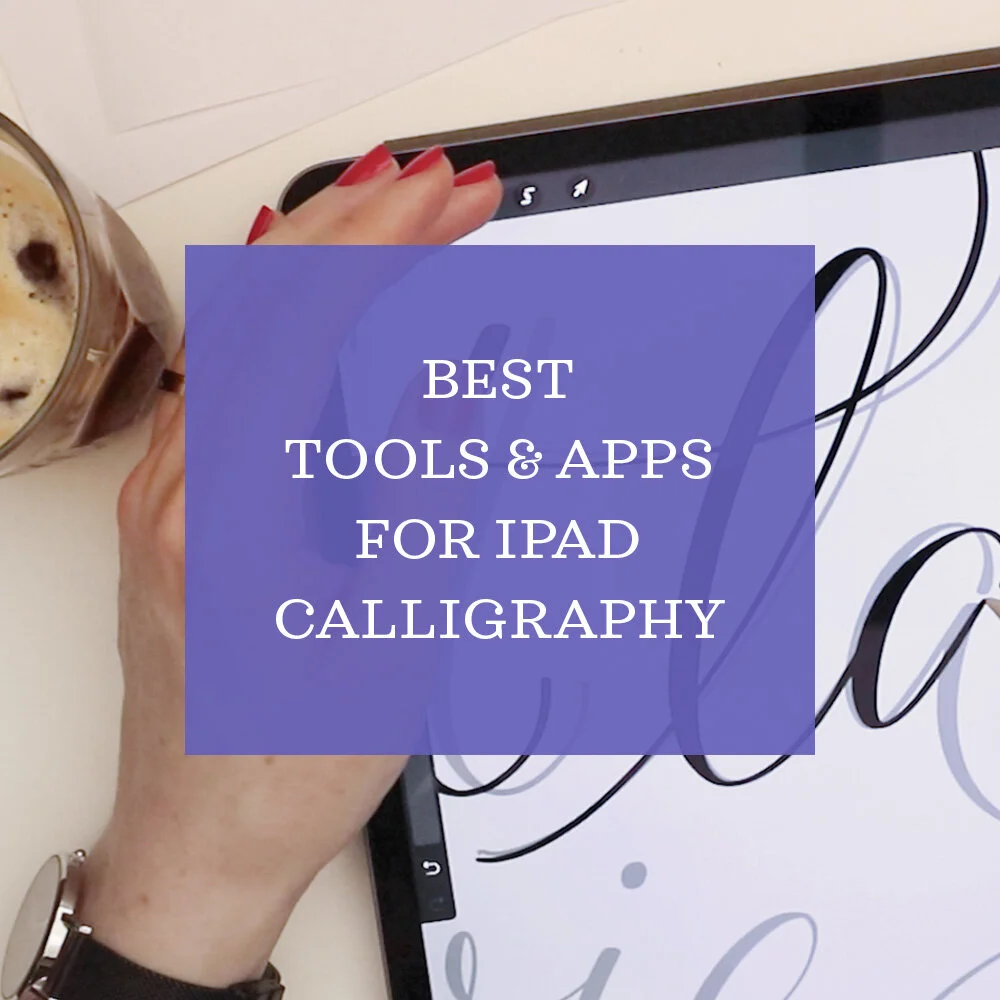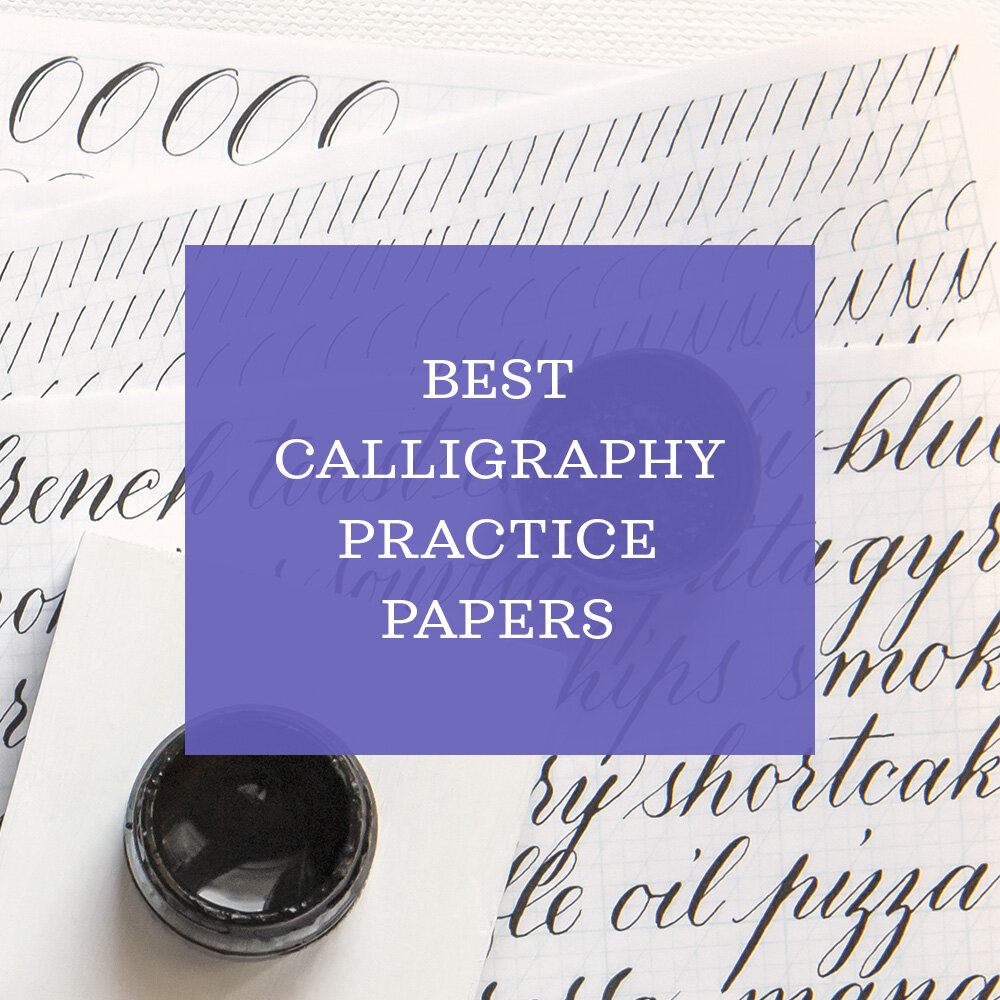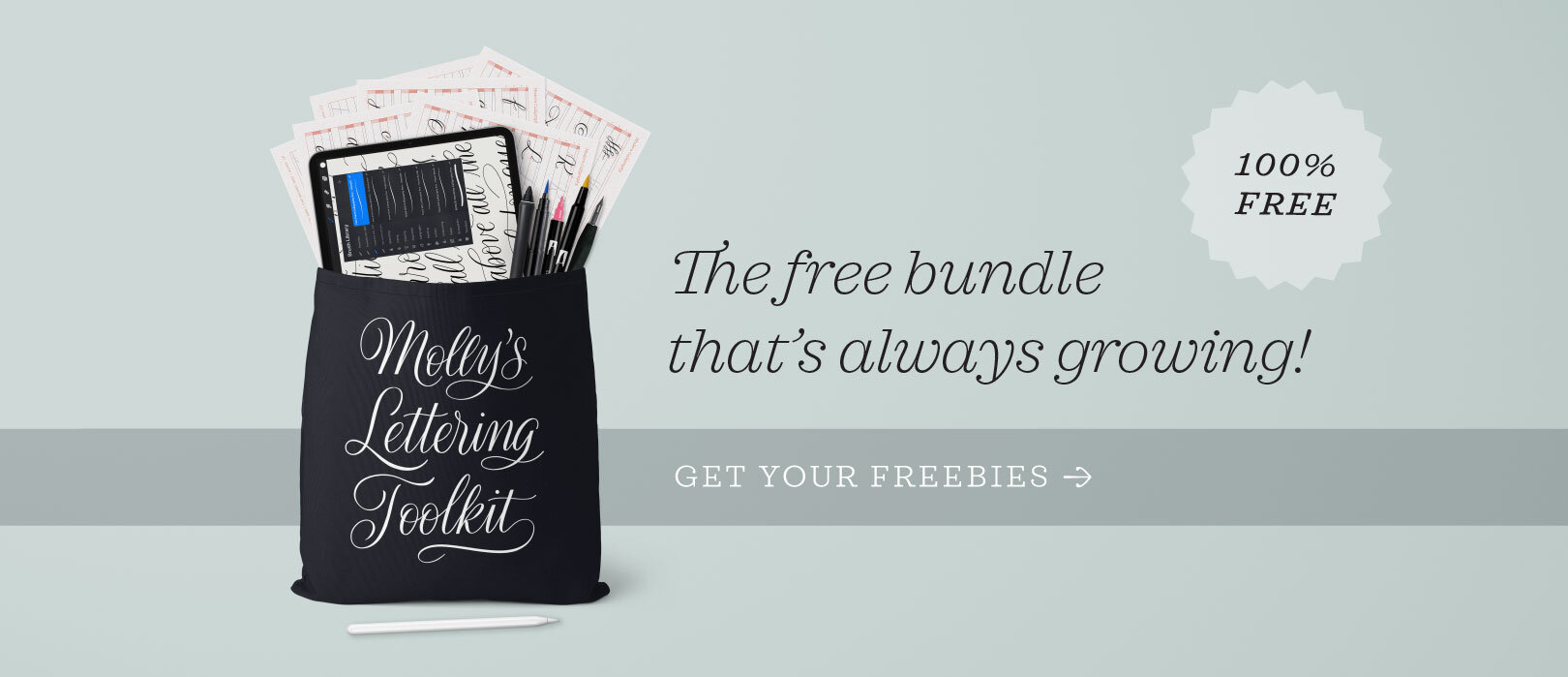My Favorite Calligraphy Inks
I earn small commissions for purchases made through links in this post. Proceeds help me to continue producing free content.
This week I’m sharing my favorite calligraphy inks. Of all the calligraphy supplies – nibs, pens, paper, etc. – ink is probably the one students ask about most. What’s the best white ink for black paper? Which metallic inks have the nicest shimmer? I aim to share my top calligraphy ink picks of every color, consistency, and quality below.
If you’ve had trouble choosing inks for your calligraphy toolkit, I completely understand. To start with, there are so many on the market, boasting such a range of different qualities, that it’s hard to know which one is right for a particular job. To make matters more confusing, lots of inks advertised to calligraphers are not actually suitable for calligraphy, either because they are too watery or they lack good pigment concentration. Before I dive into my favorites, let’s review the primary qualities of a good ink.
Considerations when picking a calligraphy ink are:
Opacity
An ink’s opacity is determined by its pigment concentration. The higher the concentration, the more opaque the ink will be. The real test of a calligraphy ink’s opacity is whether the finest hairlines dry to the same color as the thickest downstrokes. Highly-pigmented inks – like sumi and acrylics – will dry to look just as dark as they do in the bottle. On the other hand, watery inks – like fountain pen ink or watercolor – can create an ethereal look, which might be just the mood you’re going for. (Judging an ink by how it looks in the bottle can be deceptive, as many inks dry much lighter or darker than they appear in the jar!) If you’re using light ink on dark paper, you will need a very opaque ink to stand out.
Consistency
Good ink flow from the calligraphy nib is obviously essential for a good result. Some inks come with the ideal consistency right out of the bottle, but don’t discount an ink just because it’s too thick to use without watering down. Many of the best inks (as you will see in my list below) need to be mixed with water and/or Gum Arabic before achieving the perfect consistency, but when you do this step right, their quality is second-to-none. Unlike thinning out ink, thickening it is much harder, if not impossible. If you simply added too much water to a concentrated ink, leave the jar open for a few days and it will usually evaporate. But if the ink is too watery straight from the manufacturer, there is nothing you can do to make it suitable for a calligraphy dip pen.
Longevity
If you want your finished calligraphy piece to last a lifetime, then it’s crucial that your ink is up to the task. Make sure to pick an ink that is advertised as archival. These inks are Ph-balanced (meaning low acid or acid-free), and lightfast (meaning they won’t fade over time). Very often, they are waterproof, too. Make sure you choose an archival paper, too, because good ink quality means nothing if it’s paired with bad paper!
smell
While an ink’s smell doesn’t determine its writing quality, it does affect the experience of using it! Inks with toxic or strong smells can be unpleasant to use for large, time-consuming projects. Usually it’s the unnatural colors, like neon yellow, or the waterproof inks that have the strongest smells. Certainly this isn’t true for all such inks, but it is an important factor to keep in mind!
Full disclosure: This post contains affiliate links. Proceeds from these help me to continue producing free content and maintaining Calligrafile. My commitment to providing you with my top-recommended resources is not influenced by these affiliate associations.
My Favorite Calligraphy Inks
Moon Palace Sumi Ink
This is my all-time favorite black ink. I recommend most black sumi inks for both calligraphy practice and finished work, but among all the brands, Moon Palace Sumi is my top choice. I’m not the only calligrapher who loves it, so thanks to its popularity, it is one of the most widely-available sumi brands. It has the perfect consistency straight out of the bottle, and dries completely opaque, even on thin upstrokes. (Many black inks dry to a translucent gray on upstrokes.)
Another huge perk of this sumi is the bottle itself, which has a brilliant nozzle that doesn’t leak, and makes filling your inkwell a breeze. You have to tilt and squeeze the bottle for any ink to come out, which makes it really hard to spill accidentally!
Dr. Ph. Martin’s Copper Plate Gold
The two most common ink recommendations I’m asked about are gold and white inks. So here’s the first of my two favorite golds. Dr. Ph. Martin’s Iridescent line is all brilliant (literally!), but the Copper Plate Gold is especially gorgeous. To me, it’s the perfect shade of gold – not too yellow and not too red. It’s a warm metallic with just the right amount of shimmer (even when it dries!). If you’re looking for a gold ink that works equally well with light and dark papers, this is the ink for you!
The bottle is completely leak-proof, and the eyedropper makes it really easy to fill even the tiniest inkwell.
Kuretake Brilliant Gold Mica Ink
I said I have two favorite golds, and this is the second. As the name suggests, Kuretake’s Brilliant Gold Mica Ink is absolutely brilliant. This ink is so saturated in gold pigment that you must shake the bottle well before using it. It has a shaker ball inside the jar, which serves to mix the ink really well. If you use this ink for hours on end, you will notice some pigment separation and will have to stop to remix it.
Maybe you can tell that packaging is important to me, and this bottle is another great one. It is an inkwell already, so there is never a need to transfer it to another jar. Its very wide mouth and shallow depth makes it easy to dip your pen directly in, without getting ink on the pen grip.
Dr. Ph. Martin’s Bleed Proof White
As with gold, I have two favorite white inks. The first is Dr. Ph. Martin’s Bleed Proof White. This comes as a highly-concentrated paste that you must mix with water. This means that while you can’t use it straight out of the bottle, it lasts a long time – a little goes a very long way. You’ll need a resealable jar for mixing this, and the first time you make it will probably require some trial and error to get the right consistency. Once you do, though, there is no going back! The flexibility that mixing it yourself brings is a perk for me, not a drawback. I can make it as thick (i.e. opaque) or runny (i.e. translucent) as I want. And it can be mixed with other inks to create opaque pastels! This is a must for any calligrapher’s toolkit.
Dr. Ph. Martin’s Pen-White Ink
Are you noticing a theme? I love inks by Dr. Ph. Martin’s. In fact, they manufacture both my favorite whites. Their Pen-White Ink is truly unique. It wasn’t designed for calligraphy, but it has such exceptional opacity that it quickly became a favorite calligraphers’ supply kits. Like the Bleed Proof White, you cannot use this ink straight from the bottle, but it doesn’t need nearly as much water to achieve just the right consistency for writing.
It’s also a great ink to write over. Use it as a white background paint and you can do calligraphy over it! And it works for drawing accents over a finished piece. Use it over other dried inks or paint, for example, and it will not bleed.
Like so many other Dr. Ph. Martin’s inks, it comes in a convenient, leak-proof eye dropper bottle.
Ziller Ink – 30+ Colors
Ziller Inks are my favorite for colorful, opaque calligraphy inks that work beautifully straight out of the bottle. Their consistency is perfect – no water needed – and the high pigmentation means they dry opaque and brilliant, whether on dark paper or light. These are acrylic inks, not water-based, but unlike so many acrylic brands, these flow beautifully through the nib. That is due to the “sub-micron” sized pigments used. They come in a staggering range of over 30 colors, and boast being both waterproof and lightfast (meaning that they won’t fade over time).
Ziller’s packaging has changed since I bought my last set, so the bottles now look slightly different from the ones pictured here. Still, the inks come in small, glass, wide-mouth jars that are great for dipping your pen into directly.
J. Herbin Perfumed Violet Ink
Yes, J. Herbin perfumed ink really does smell like flowers! Straight from the bottle, the scent is really concentrated and, if I’m honest, I would not exactly call it pleasant. However, when you write with it and the ink dries, it has a very subtle, sweet scent. It’s a little bit like how vanilla extract smells much stronger in the bottle than when baked into a vanilla cupcake! It has a consistency that doubles as calligraphy ink and fountain pen ink. That means it’s on the watery side, and results in translucent, watercolor-like calligraphy. I love that about it, but if you’re looking for an opaque finish, this isn’t the ink for you. (Watch it in action in my YouTube demonstration!)
The glass bottle is a beautiful perk. It has a build-in pen rest in the front (!) and a beautiful label. Each of the various scents has its own matching motif.
Vermillion Sumi Ink
There’s nothing quite like a good vermillion ink. Not only are they incredibly vibrant and opaque, but the color is so striking and unique. Right out of the bottle, the consistency of these inks is perfect, much like a good black Sumi.
This is another ink with great packaging. See those semi-circle cut-outs in the lid? That’s a pen rest! Just flip the lid upside down and you can rest your pen in the grooves. If you want to see an example of this, look no further than my book cover!
Dr. Ph. Martin’s Black Star Matte Black Ink
Dr. Ph. Martin’s Black Star Ink is unique among black calligraphy inks because it dries completely matte! Many inks aren’t exactly shiny when they dry, but very few are completely matte like this one is. This makes for a unique appearance. I love using it for calligraphy that I will scan. The matte finish means that it doesn’t reflect light, which comes in handy if you’re going to be putting it on a scanner bed!
Again, this one boasts a leak-proof, glass eye dropper bottle.
Walker’s Copperplate Black Iron Gall Ink
Created by Master Penman Brian Walker, this ink is made according to a nineteenth-century recipe, and produced in small batches. Unlike most iron gall inks, Walker’s Copperplate Ink fades into a beautiful, watercolor-like gray when it dries – even for heavy downstrokes. If you buy this expecting a true black, as so many iron galls are, you will be disappointed. I, however, love it as a good gray ink, which is not easy to find. The consistency and ink flow are also fantastic for fine hairlines and precise strokes.
The wide-mouth bottle makes it easy to dip your pen directly in.
Designer Gouache for Metallic & Light Colors
I’d be remiss if I didn’t include gouache on this list. No, it’s not technically an ink, but it can function as one! Like the Bleed Proof White I mention above, all gouache paints need to be mixed with water before they can be used with a calligraphy pen. Gouache is a fantastic choice for light colors, metallics, and neons, because they are so opaque that they dry just as bright on black paper as white. They also don’t bleed the way water-based inks can, making them a good choice for finicky, fibrous papers, too. The drawback is that they can take some practice to use, as they dry faster on your nib and the larger pigment particles can slow the ink flow. (For the smoothest flow through your pen nib, and to add a bit of shine, add a few drops of Gum Arabic into the mix.)
I have a couple favorite brands. Pictured here is Plakkaatverf Designer Gouache in Silver and Light Gold. My other favorite brand is Winsor & Newton, and their Designer gouache line is equally wonderful!

